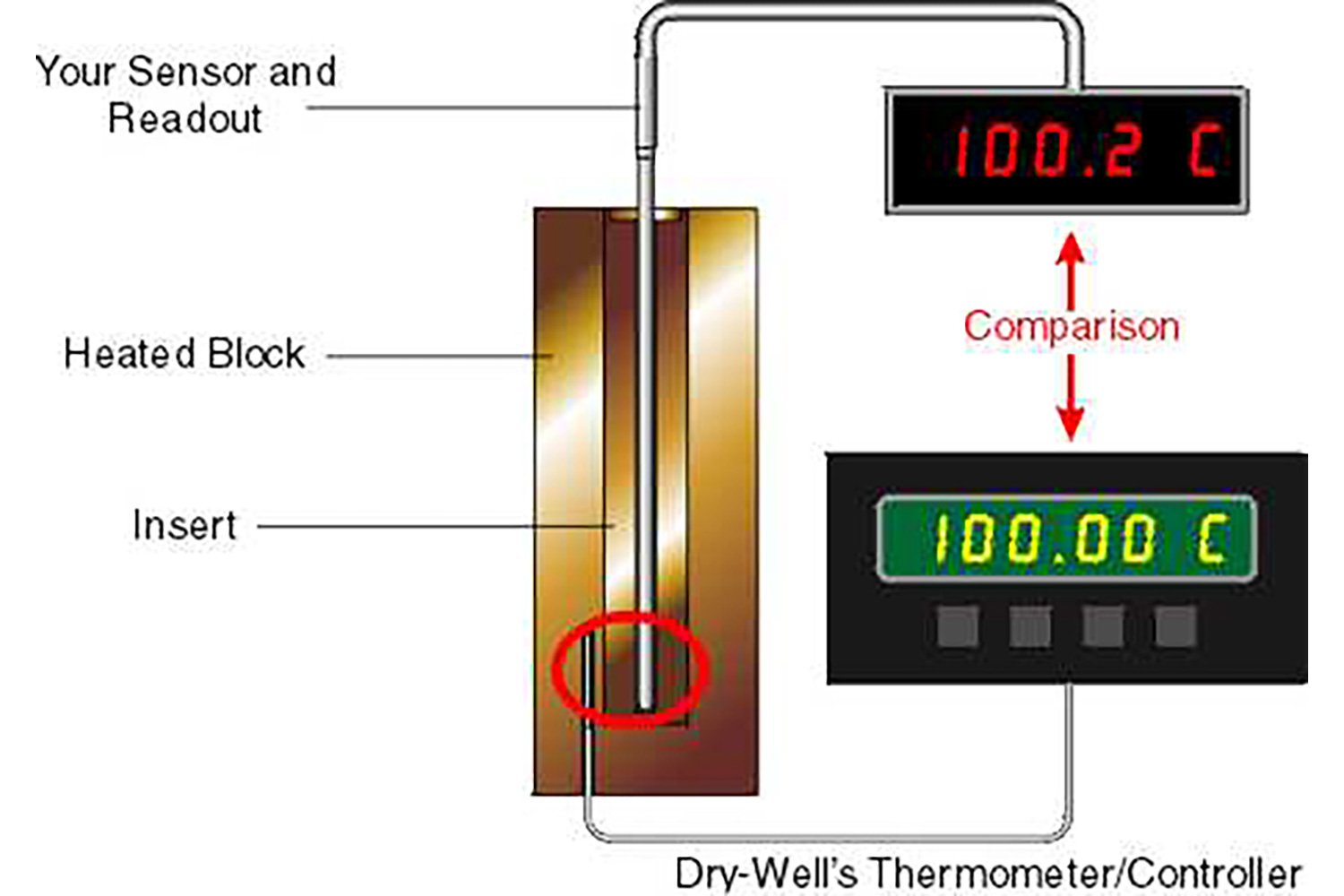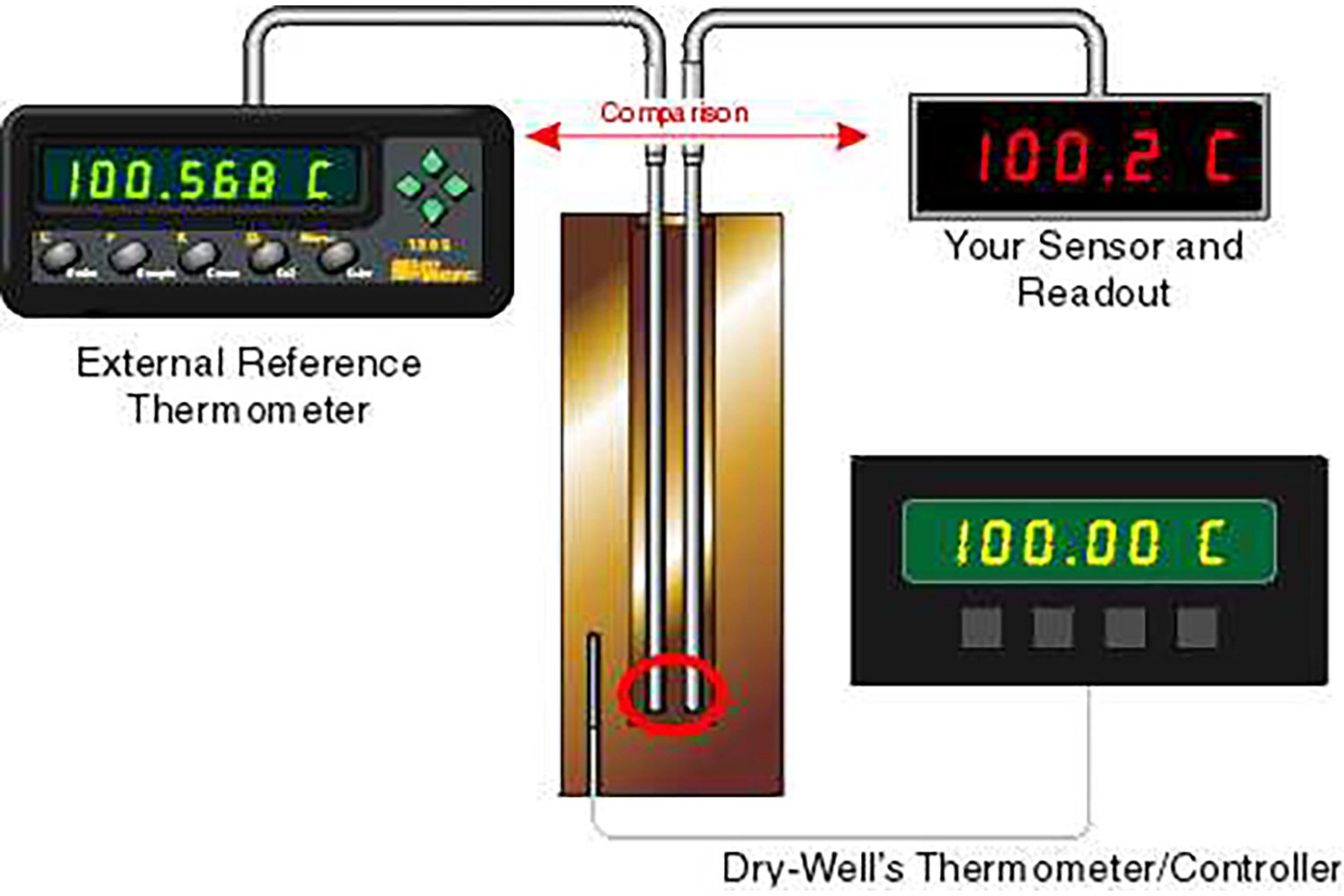Dry-wells are often used as a dual-purpose tool, acting as both a heat source and a reference thermometer. Users typically place the sensor or thermometer to be tested (the device under test or DUT) into the well and compare its reading to the temperature displayed on the dry-well, as depicted in figure 1. The dry-well displays both the temperature set by the user and the actual temperature measured by the dry-well's own control sensor. However, a couple of important considerations should be borne in mind when using this method.

Dry-well display temperature
First, not all dry-well manufacturers calibrate this display. When quoting the “accuracy” of their dry-well, some manufacturers actually give you the “potential” calibration accuracy if you use an adequate external thermometer to read the dry-well’s temperature during the calibration. The actual accuracy of the dry-well's display is often left to guesswork.
Instead, meet this concern head-on by choosing a dry-well calibrator that has a calibrated display of the well’s temperature. Fluke Calibration dry-wells all feature a calibrated display.
Traceability
Second, several manufacturers who do calibrate their displays and provide specifications for display accuracy, don't include a traceable calibration report with the dry-well. While it is often available, that report is usually an additional cost.
Take the extra step of asking for that calibration report and understanding the traceability you’re working with. At Fluke Calibration, we include a traceable calibration report with every dry-well, at no extra charge.
Precise reference thermometer
Despite the fact that we design the electronics and sensor package for each dry-well to provide traceable accuracy suitable for many applications, accuracy can be further improved, no matter what kind of dry-well you’re working with. One of the easiest ways to see more accuracy is by using a more precise reference thermometer during your calibrations. This will help you to achieve better results.
Some of our blocks feature multiple holes and we also offer two-hole inserts in some models. Which enables you to place your reference thermometer in close proximity to the sensor you're testing (Figure 2).
